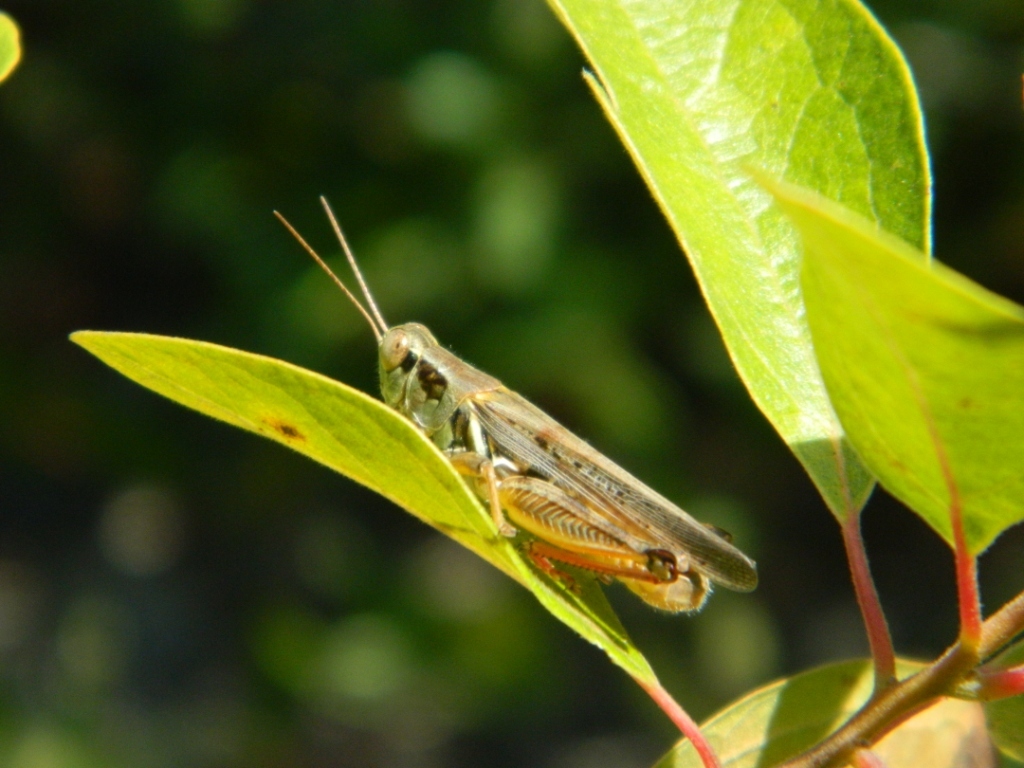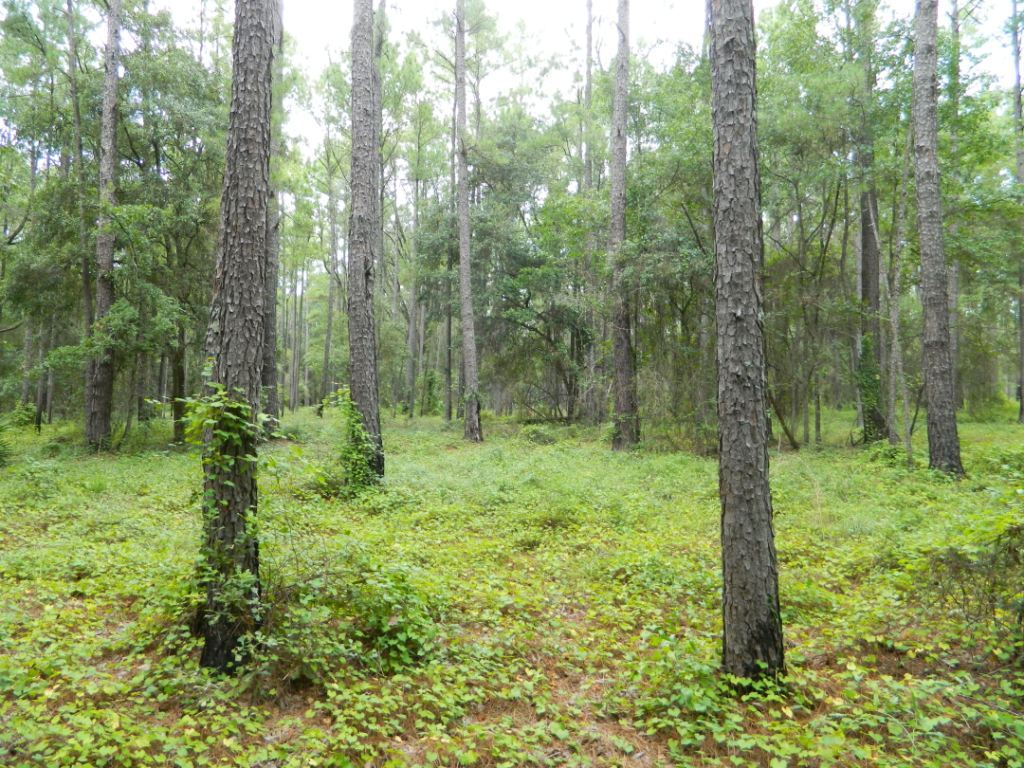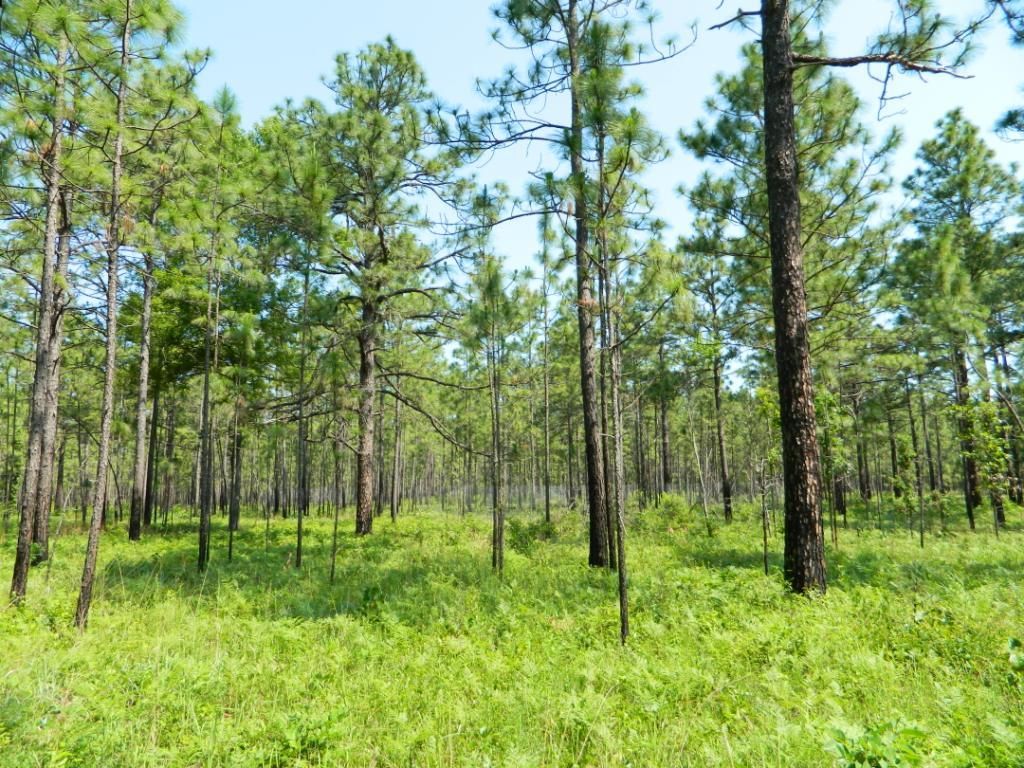Grasshoppers signal slow recovery of post-agricultural woodlands, study finds

UW-Madison researchers Philip Hahn and John Orrock used grasshoppers, like the above Melanoplus found in the South Carolina longleaf pine forests, as indicators of the recovery success of post-agricultural woodlands.
Photos: Phil Hahn
Sixty years ago, the plows ended their reign and the fields were allowed to return to nature — allowed to become the woodland forests they once were.
But even now, the ghosts of land-use past haunt these woods. New research by Philip Hahn and John Orrock at the University of Wisconsin–Madison on the recovery of South Carolina longleaf pine woodlands once used for cropland shows just how long lasting the legacy of agriculture can be in the recovery of natural places.
By comparing grasshoppers found at woodland sites once used for agriculture to similar sites never disturbed by farming, Hahn and Orrock show that despite decades of recovery, the numbers and types of species found in each differ, as do the understory plants and other ecological variables, like soil properties. The findings were published today in the Journal of Animal Ecology.
“Before the research started, we thought most bad things could be undone in a decade. The good news is, at least we know where we are … ”
John Orrock
While several studies have examined the recovery of plant species at such sites, this is the first to examine the impacts of historical agriculture on animals.
The findings have implications for conservationists, land-use planners, policymakers and land managers looking to prevent habitat destruction or promote ecological recovery of natural spaces. Hahn and Orrock suggest new strategies may be needed in these disturbed environments.
The findings also challenge conventional ecological wisdom, in ways the scientists did not expect.
“Ecologically, grasshoppers are at the heart of the food chain,” says Hahn, a graduate student in Orrock’s laboratory. Orrock is an associate professor in the Department of Zoology. “They eat the plants and then they’re eaten by others: other insects, reptiles, birds.”
Like the proverbial canary in the coal mine, the grasshoppers in the study served as a signal of the recovery of areas once used for agriculture. Building on past research that shows post-agricultural sites have poorer-quality soil and differences in the types of plant species that grow back, Hahn surveyed the plants, soil quality and grasshoppers found at 36 study sites.
He wanted to know whether earlier land use changed the numbers and types of grasshoppers found at each site and whether the relationships between the insects, plants and the environment were altered.


Researchers Philip Hahn and John Orrock studied woodlots like the longleaf pine forests above to see how lands once used for agriculture (top photo) compared to similar sites never disturbed by farming (bottom).
Sweeping through the plants in the understory with a tool called — fittingly — a sweep net, Hahn collected grasshoppers and recorded the types and numbers of those he found in both undisturbed and post-agricultural woodlands. He collected 459 of the hopping critters, representing numerous different types of grasshopper.
“The humble grasshopper, ubiquitous, yet cryptic,” Orrock reflects; they’re not as visible or well known as the popular deer.
The researchers found differences in the types of grasshoppers collected in each, related to the understory plants that grew and the hardness of the soil.
In remnant woodlands with no history of agriculture, more plant types equated to greater numbers of grasshoppers, an expected and traditional link between plants and the species that depend on them for food and shelter. This connection did not exist in areas once used as cropland, calling into question a long-held dogma of ecological relationships.
“It challenges what we know,” Orrock says. “If it’s true that the past influences ecological relationships in ways that we can’t predict, then all bets are off.”
The researchers say this is especially important as land use continues to change, with some areas of the U.S. converting wild spaces into new agricultural lands and others abandoning massive plots once used to grow food.
“We’ve wondered why it is — 60 years after we’ve stopped plowing — there are these legacy effects of land use on communities,” says Orrock. “Why has what we did so long ago lasted? Why hasn’t nature recovered?”
“It challenges what we know. If it’s true that the past influences ecological relationships in ways that we can’t predict, then all bets are off.”
John Orrock
The boundaries can be so distinct in the woodlands they studied, he says, that it’s easy to tell within four meters where the plowline once ended.
“It’s remarkable how far the past reaches into the future,” says Orrock.
The knowledge, the researchers say, presents opportunities to do better. For instance, Hahn believes new strategies can be tried, like reintroducing once-native plant species to abandoned sites earlier on, or proactively working on restoring the health of the soil. Conversely, more conservation and management efforts could be spent promoting less habitat degradation in the first place.
“Before the research started, we thought most bad things could be undone in a decade,” Orrock says. “The good news is, at least we know where we are and it’s a start. We know business as usual might not work.”
The study was funded by the Strategic Environmental Research and Development Program, the United States Department of Agriculture Forest Service, and the UW–Madison Department of Zoology.
Tags: biosciences, conservation, environment, research, zoology




